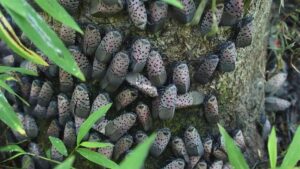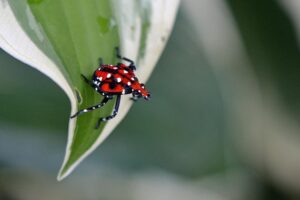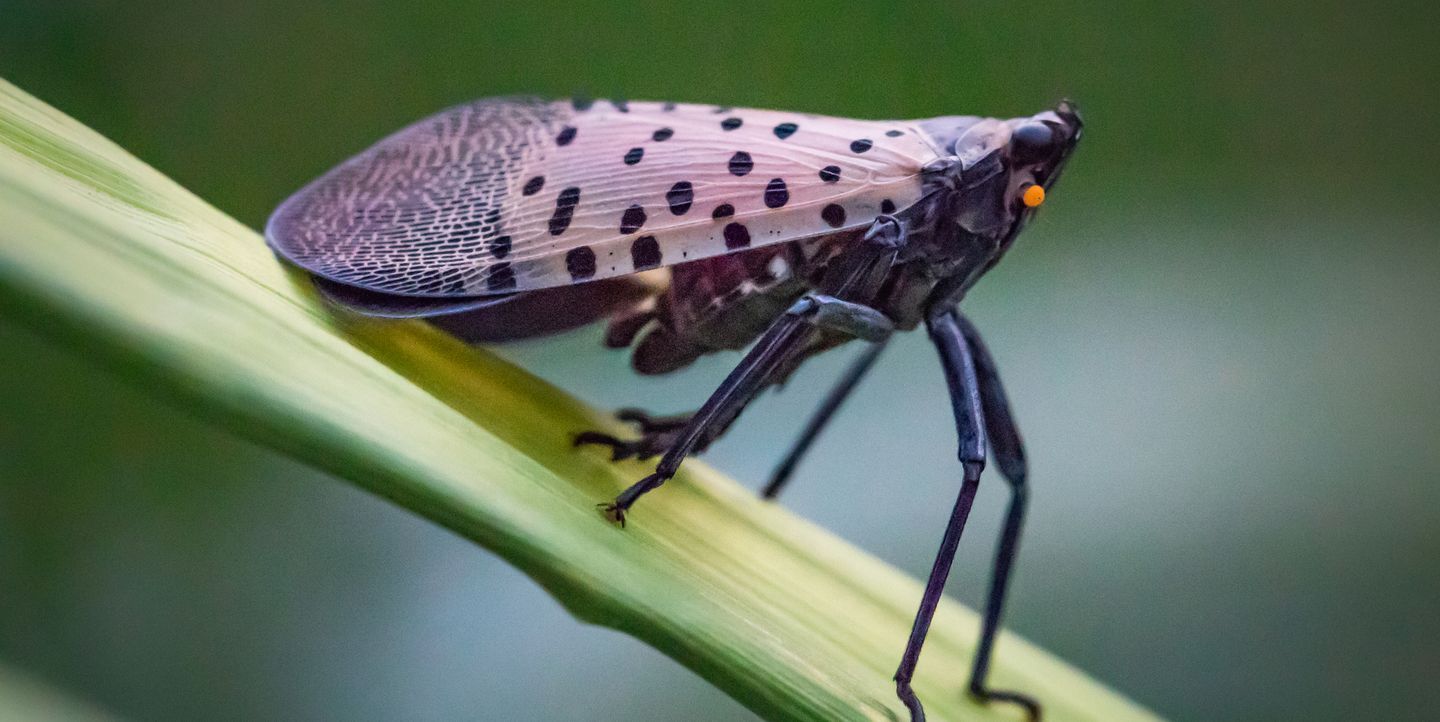Controlling Invasive Species – Spotted Lanternfly Edition
Pennsylvania home and property owners have been struggling with Spotted Lanternfly since they were first “spotted” in Berks County in 2014. An invasive species native to parts of Asia, the Spotted Lanternfly has been known to feed on and decimate all different types of plants ranging from fruit trees to landscape plants. As we move into our sixth year dealing with this invasive species, there is a lot of information that can help you identify and resolve a Spotted Lanternfly infestation.

How Spotted Lanternfly Harm Plants
Spotted Lanternfly have piercing-sucking mouth-parts that they insert into the phloem of trees where they can feed on the sap. As a result, sap will leak on the outside of trees. In high concentrations the feeding will weaken host trees and potentially even kill an already weakened specimen.
The most detrimental aspect of the Spotted Lanternfly is the excretion they leave behind, called honeydew. The honeydew coats both the bark and leaves of trees, attracting fungi and black mold. It also has been known to block photosynthesis, further harming the plants on which it feeds.
Which Plants are Affected by Spotted Lanternfly
Though most often found on their host plant, the Tree of Heaven, the Spotted Lanternfly has also been found on over seventy other species of plants. As we continue to learn more about them, the list will continue to grow. It is important to note that Spotted Lanternfly does not feed on the fruit or food crop from trees, rather they feed on the woody parts, as explained above. Here are the key plants in our area that are most susceptible.
Landscape Trees:
- Maples
- Pines

- Birch
- Styrax
- Stewartia
- Dogwood
- Service Berry
- Alberta Spruce
Shrubbery:
- Azalea
- American Bittersweet
- Grape Vine
Street and Shade Trees:
- Sycamore
- Poplar
- Willow
- Oak
- Beech
- Tulip Poplar
- Lynden
In addition to those listed above, the Spotted Lanternfly is also known to feed on the bark of most types of fruiting trees and grain crops.
Solutions for Controlling Spotted Lanternfly
As Spotted Lanternfly mature, the methods used to control and remove them change. Egg mass removal, which takes place between December and May, includes manually removing masses of Spotted Lanternfly eggs from plants to avoid further damage that would take place if they were to mature.
The most effective method for protecting your property from Spotted Lanternfly is a root drench. Dooley-Pyne offers an application of systemic insecticide in the spring that protects your trees by limiting the population of Spotted Lanternfly for up to five months.
From April to June a process referred to as tree banding is implemented that involves glue traps strategically placed on affected trees to capture Spotted Lanternfly. Finally, from June to November, there is the option to have insecticides sprayed directly onto Spotted Lanternflies.
Conclusion
If you have been affected by Spotted Lanternfly and are concerned about the damage that may be done to your trees and other plants, contact Dooley-Pyne to learn more about our multifaceted approach to controlling and removing the invasive species!
View All Blogs
